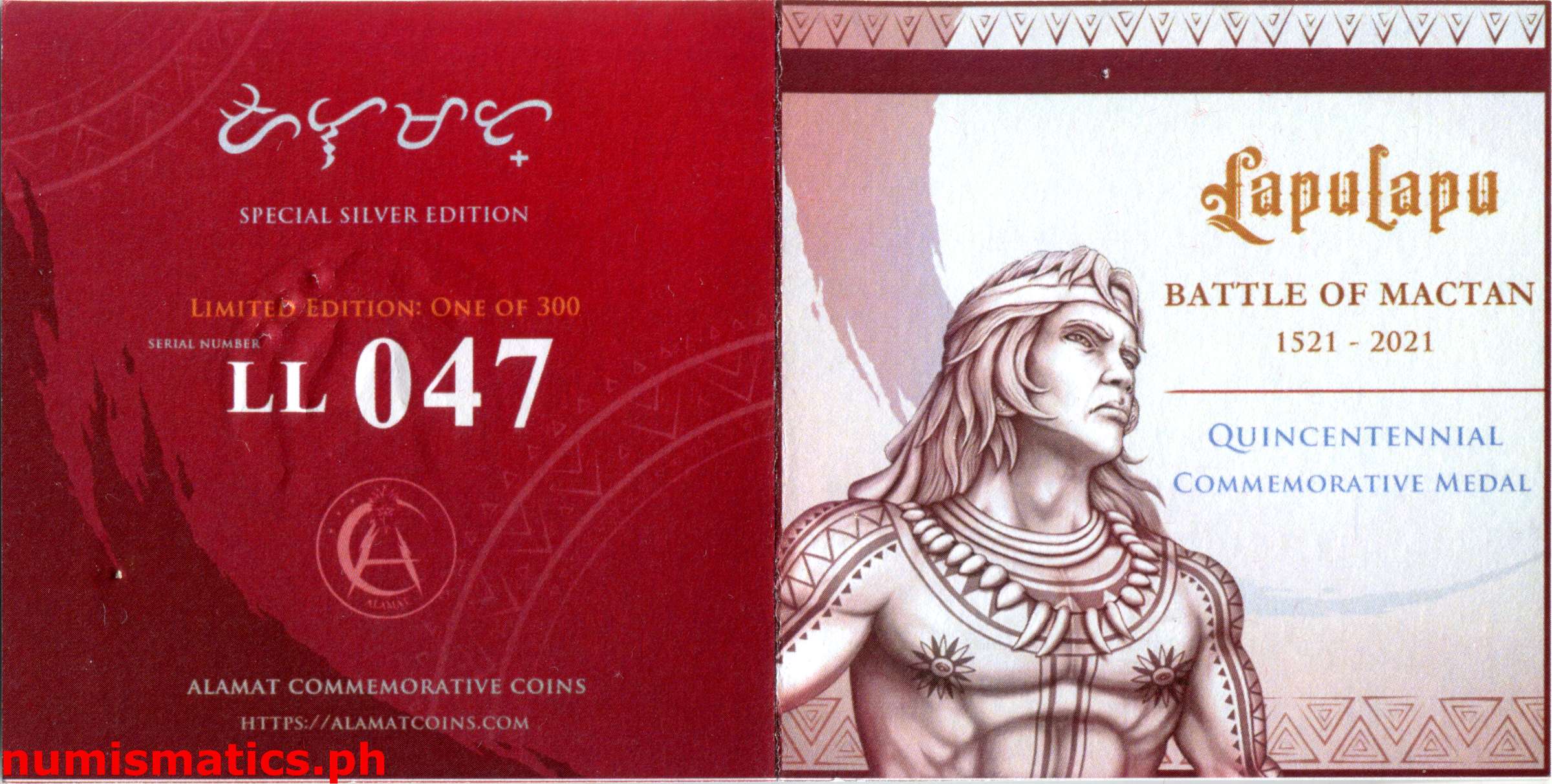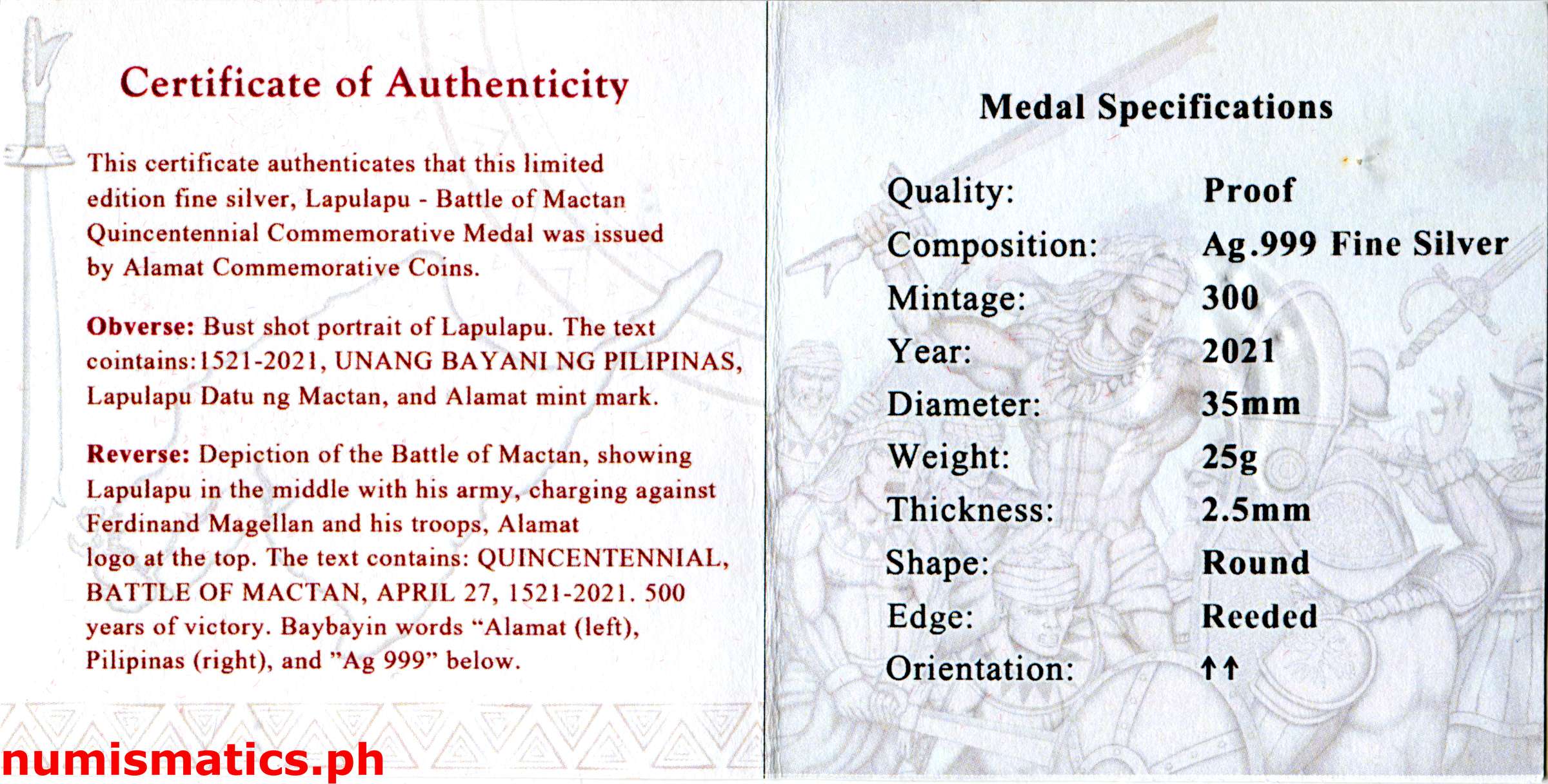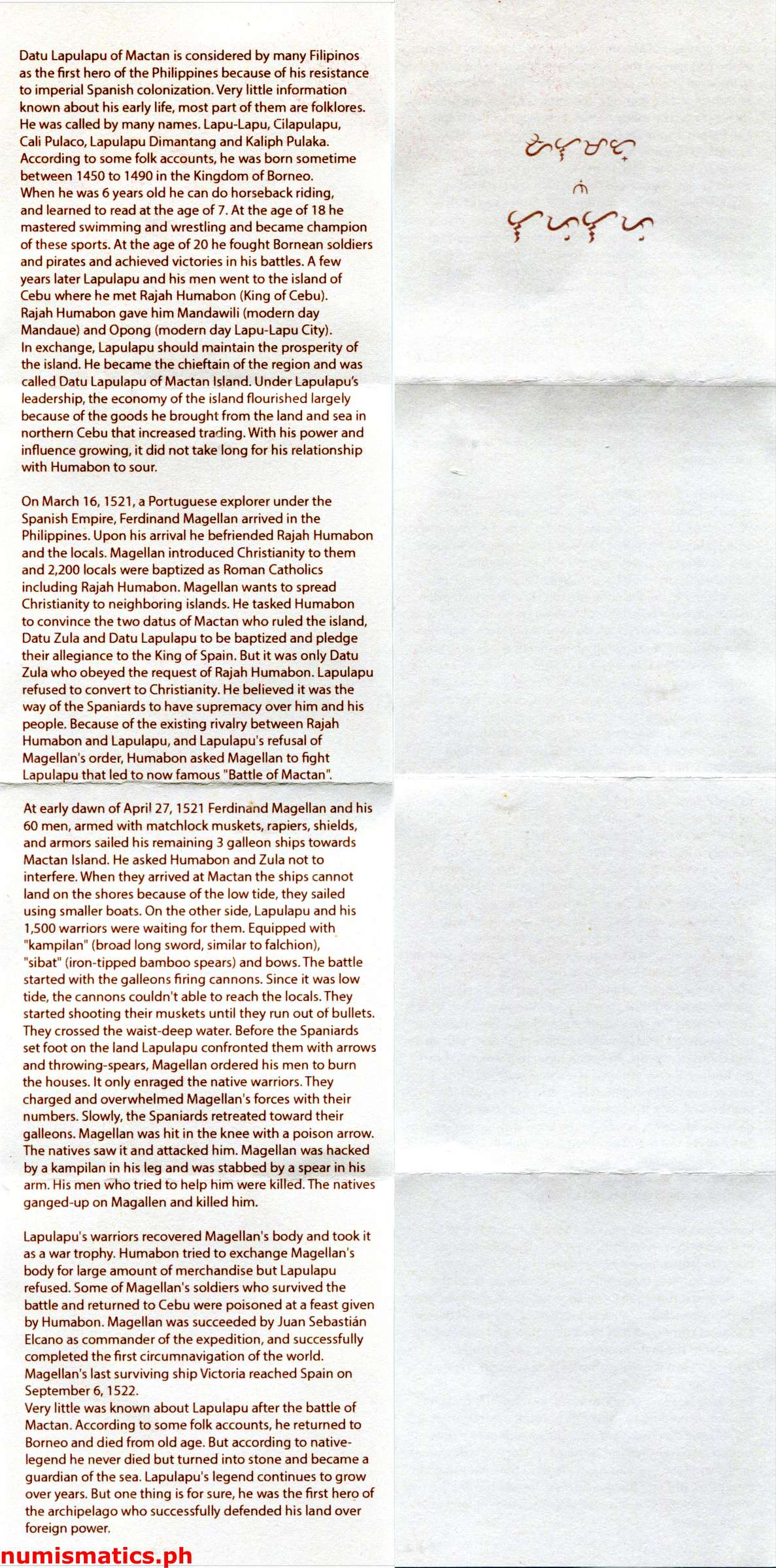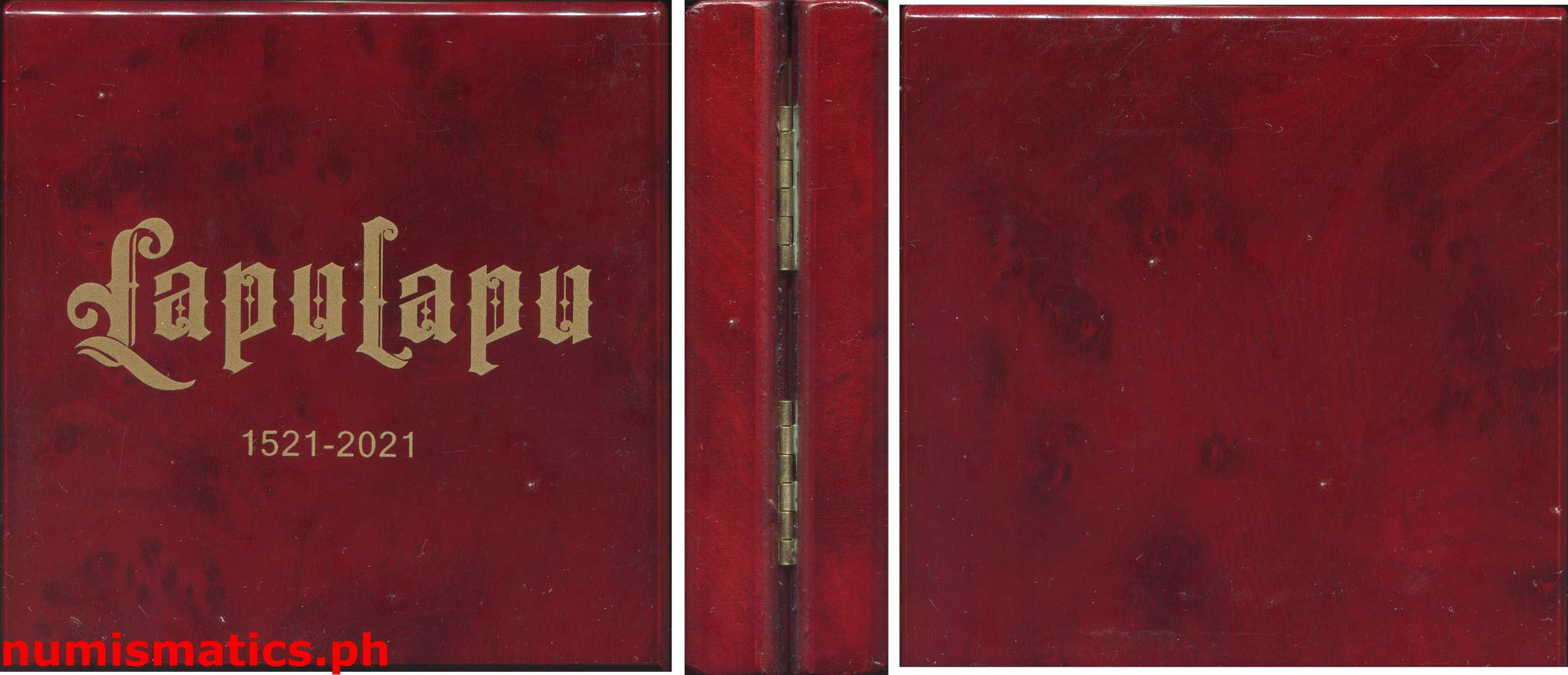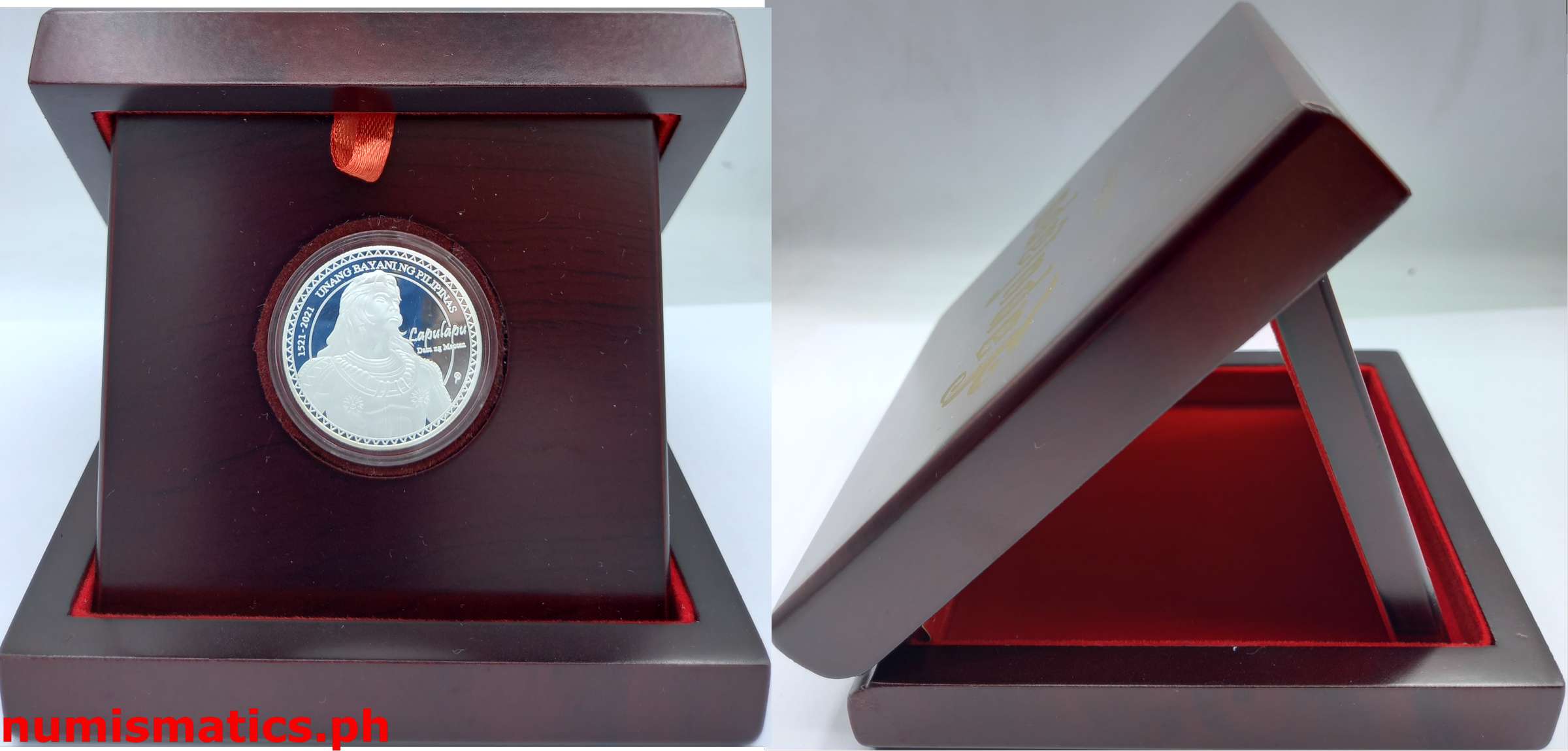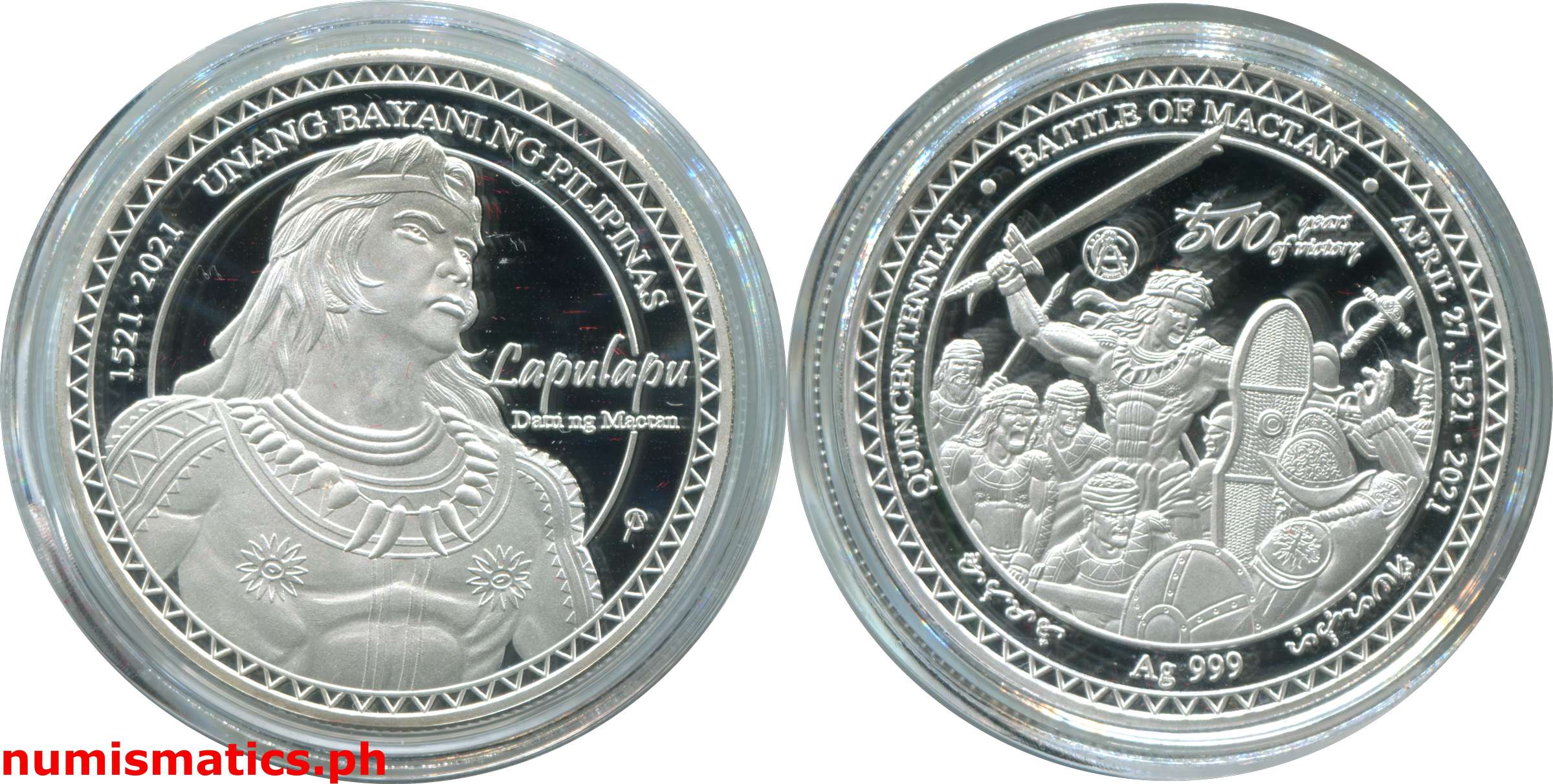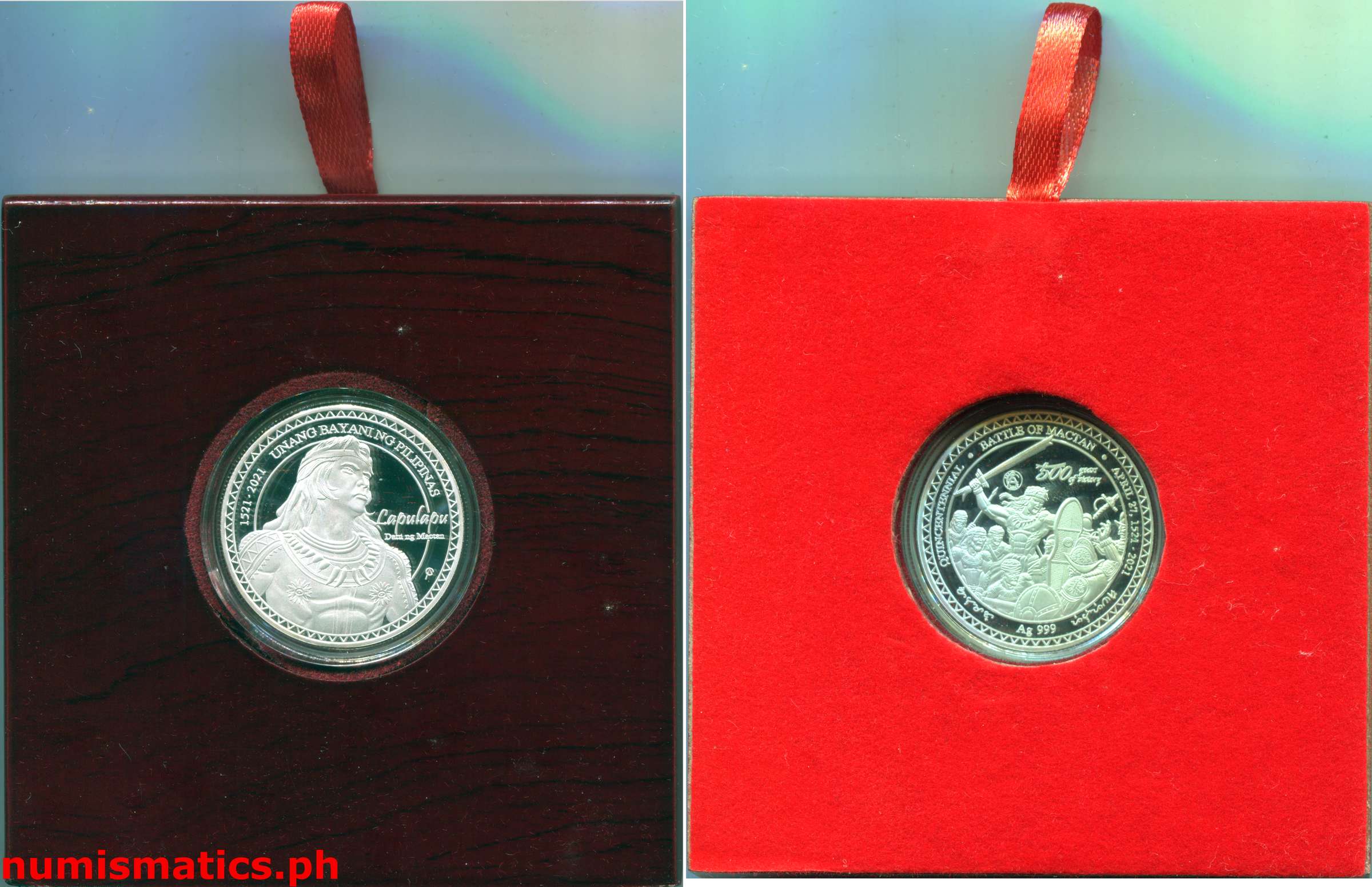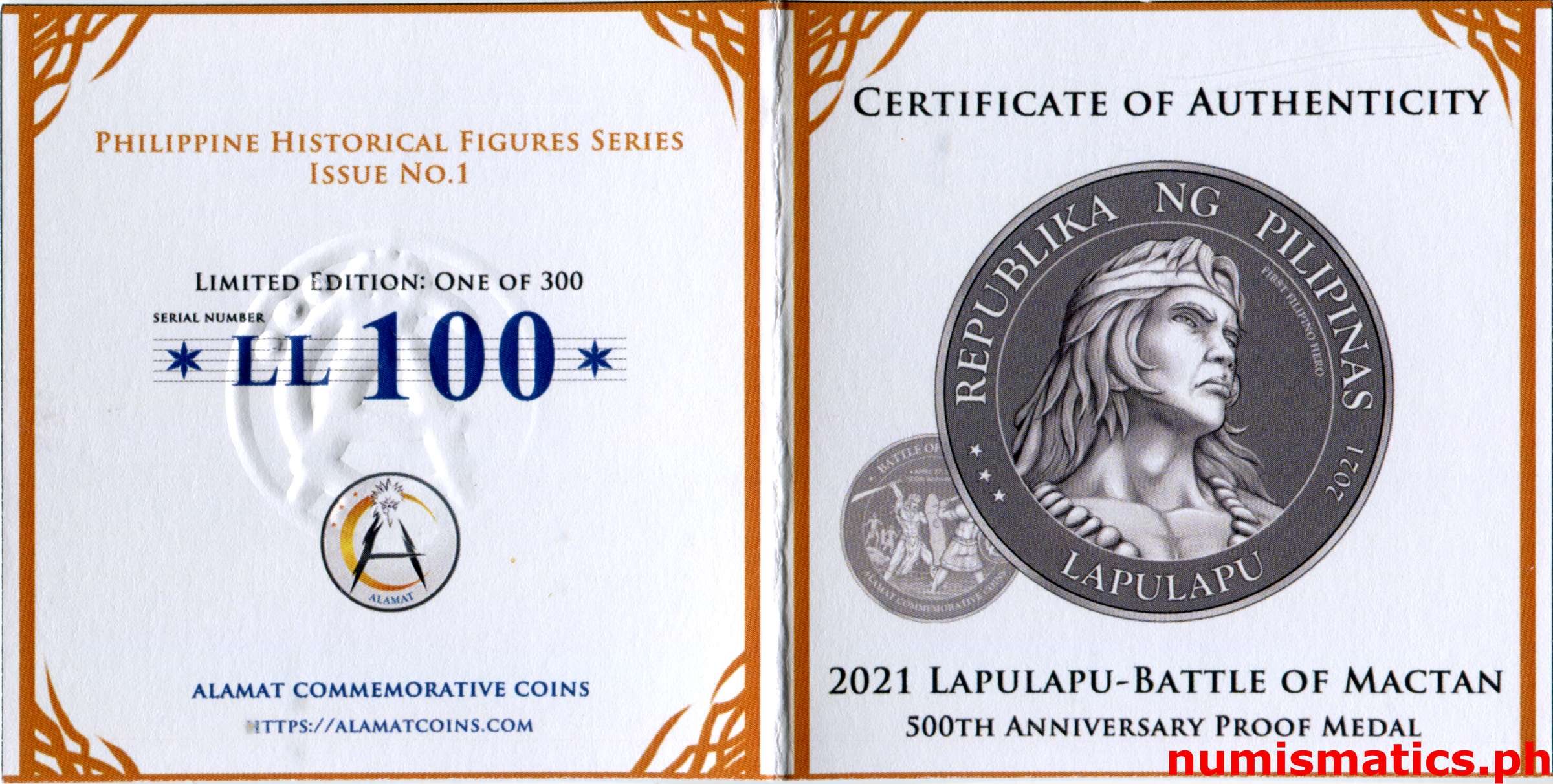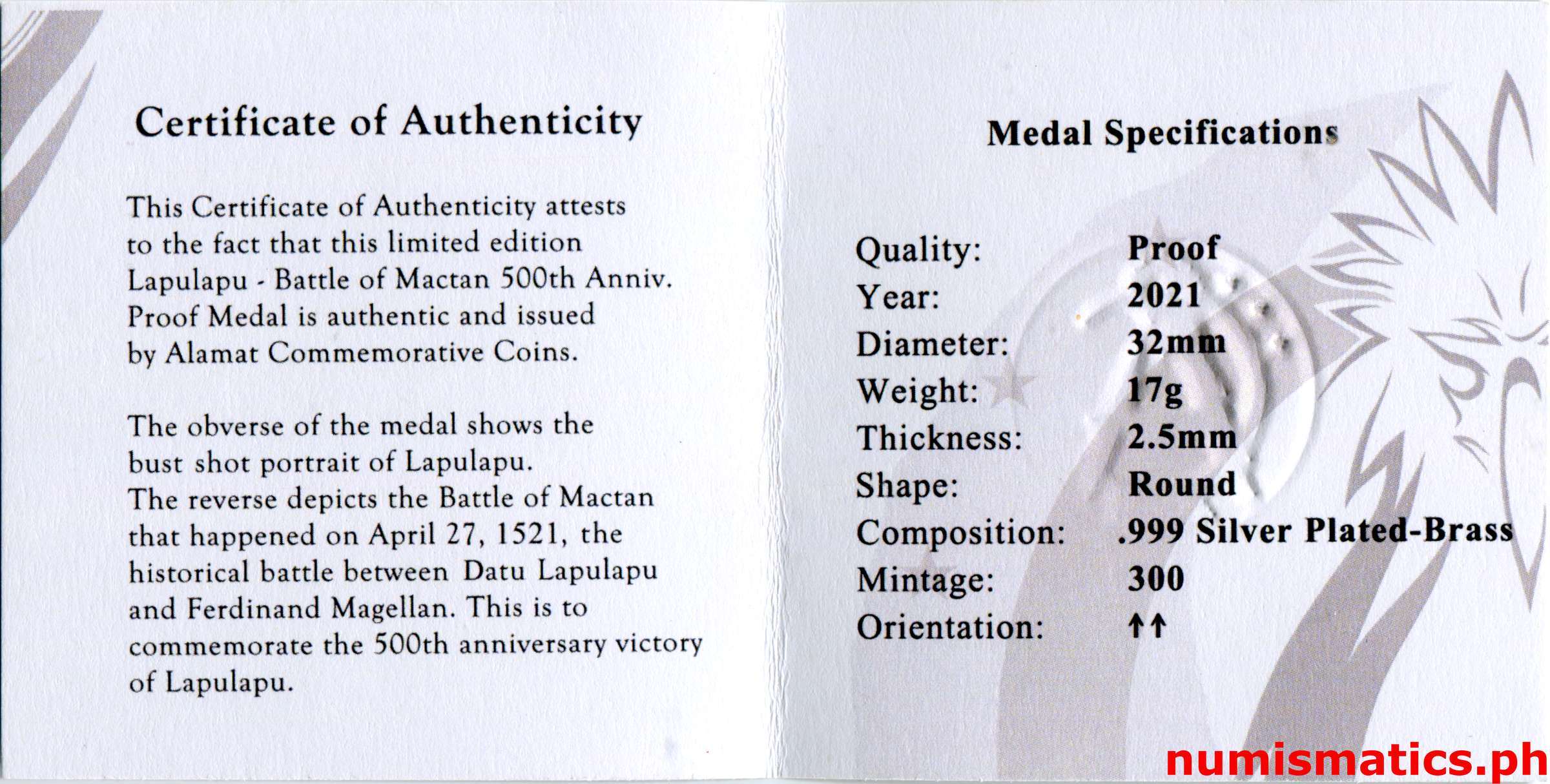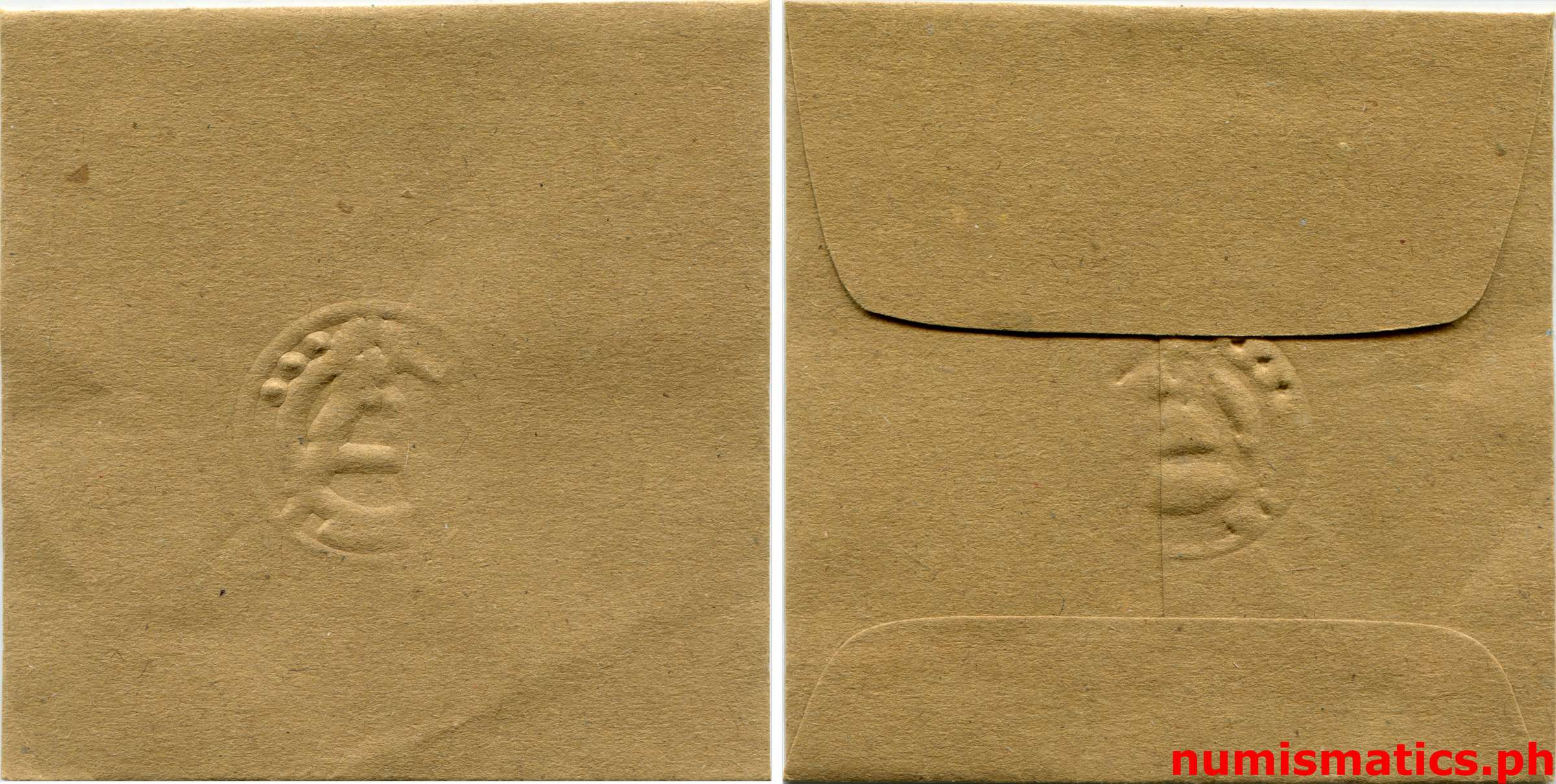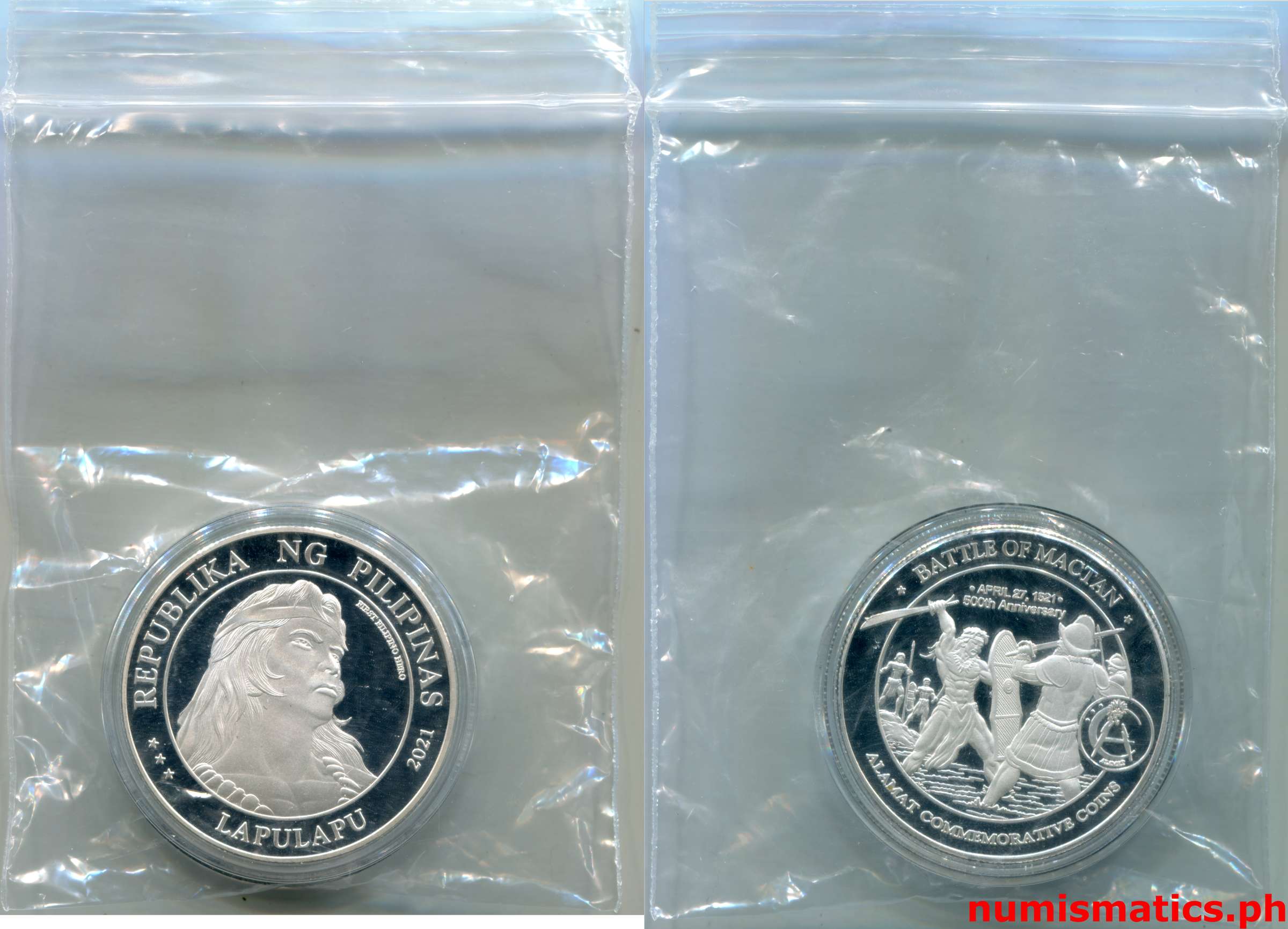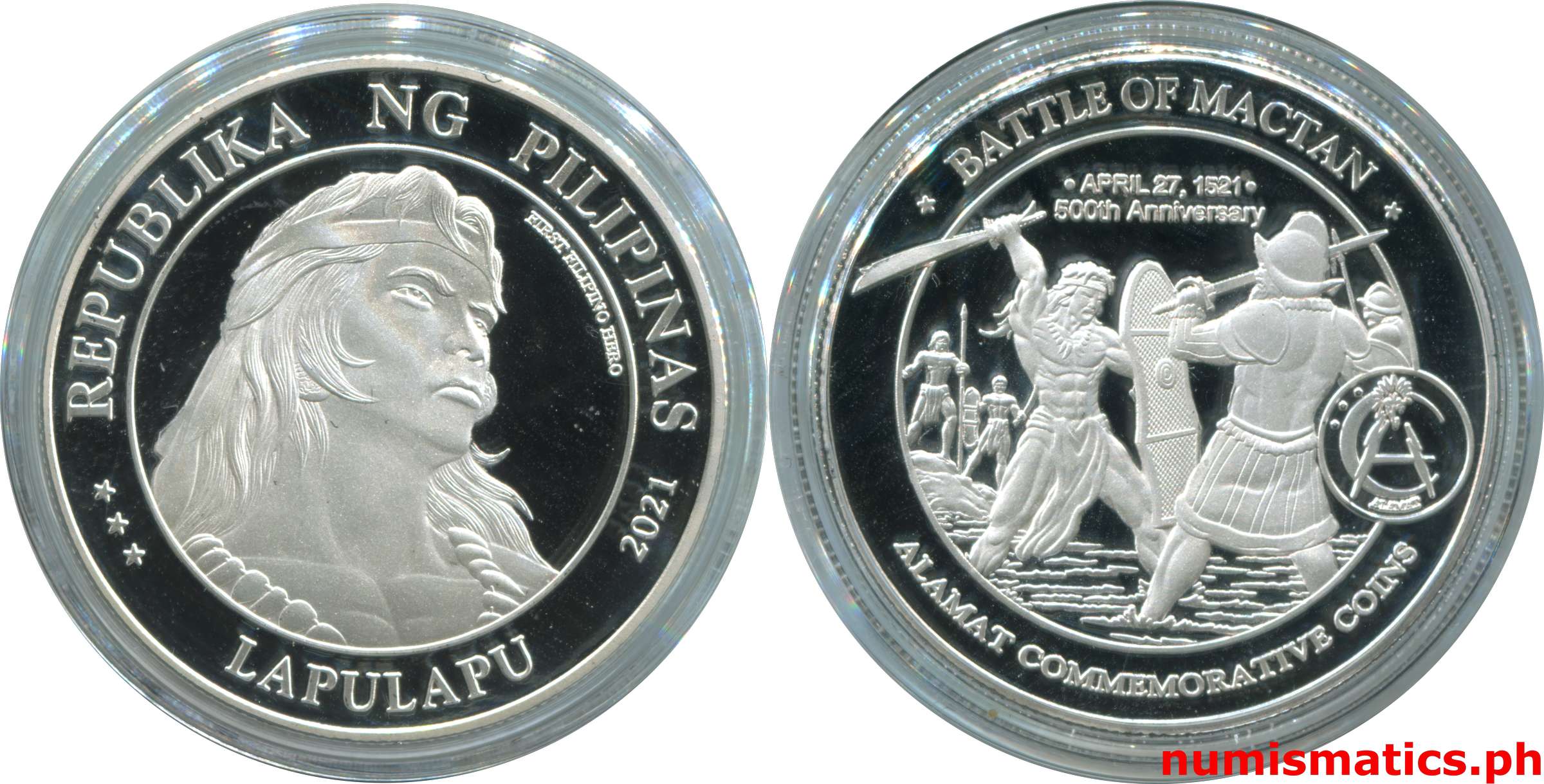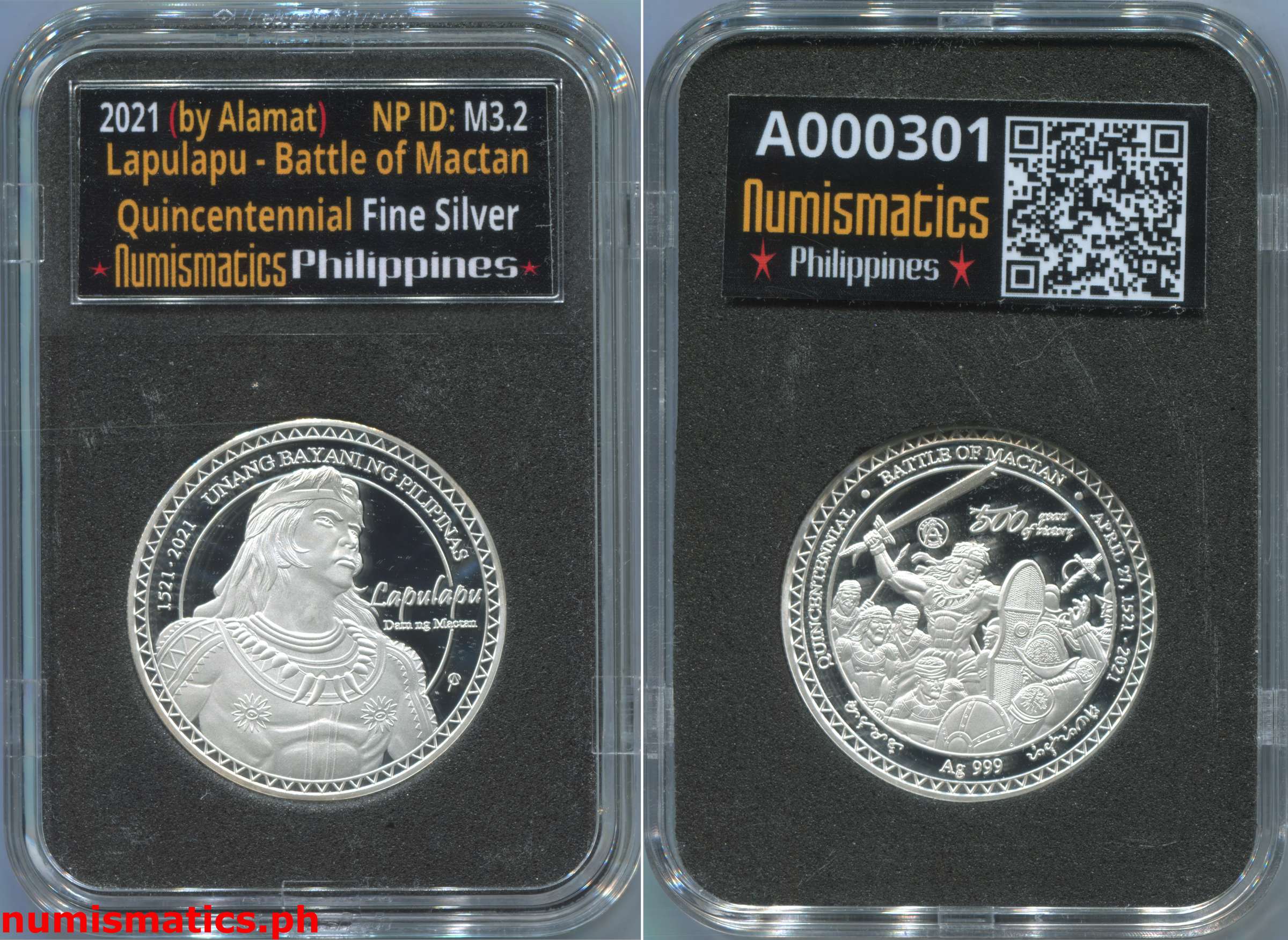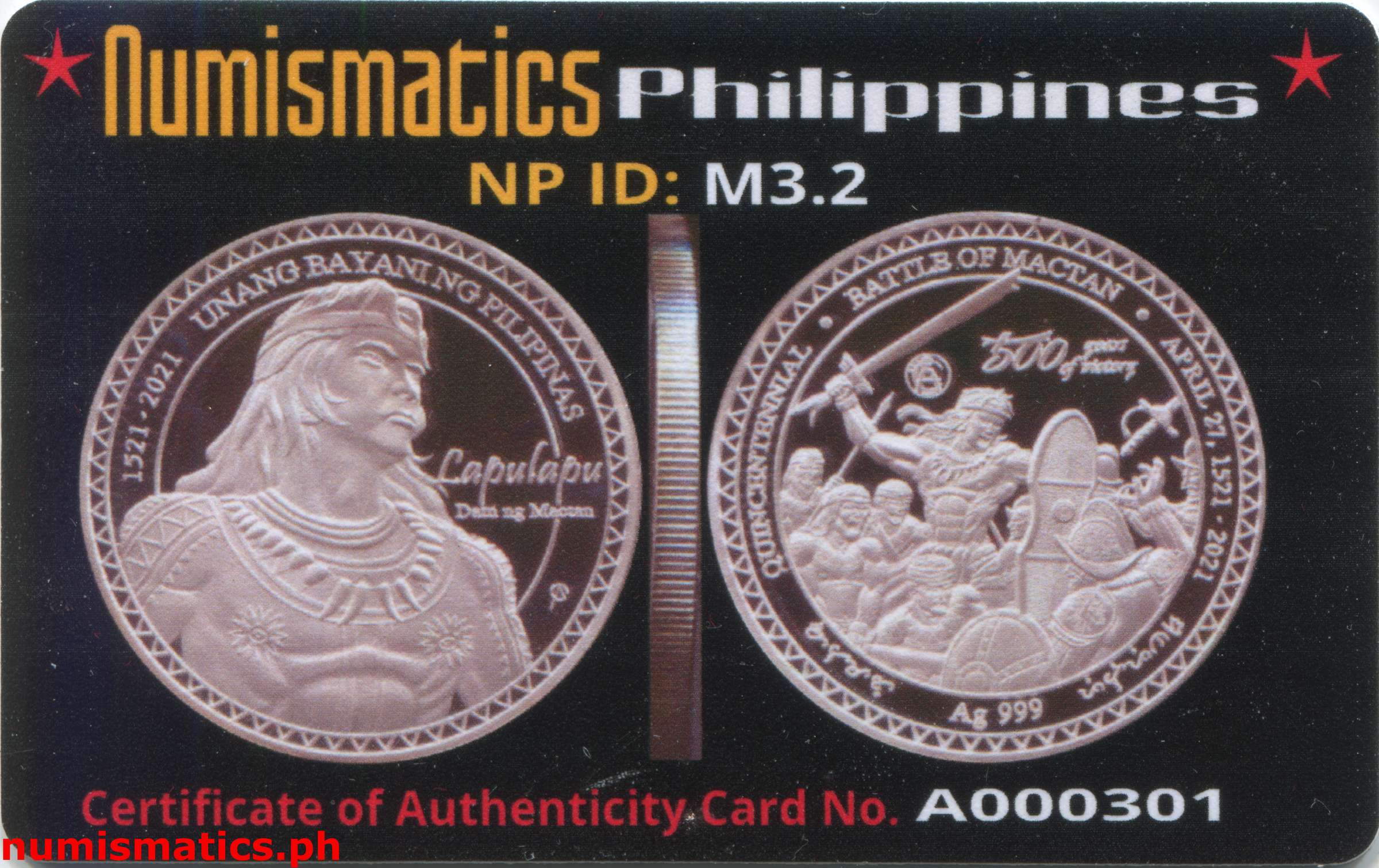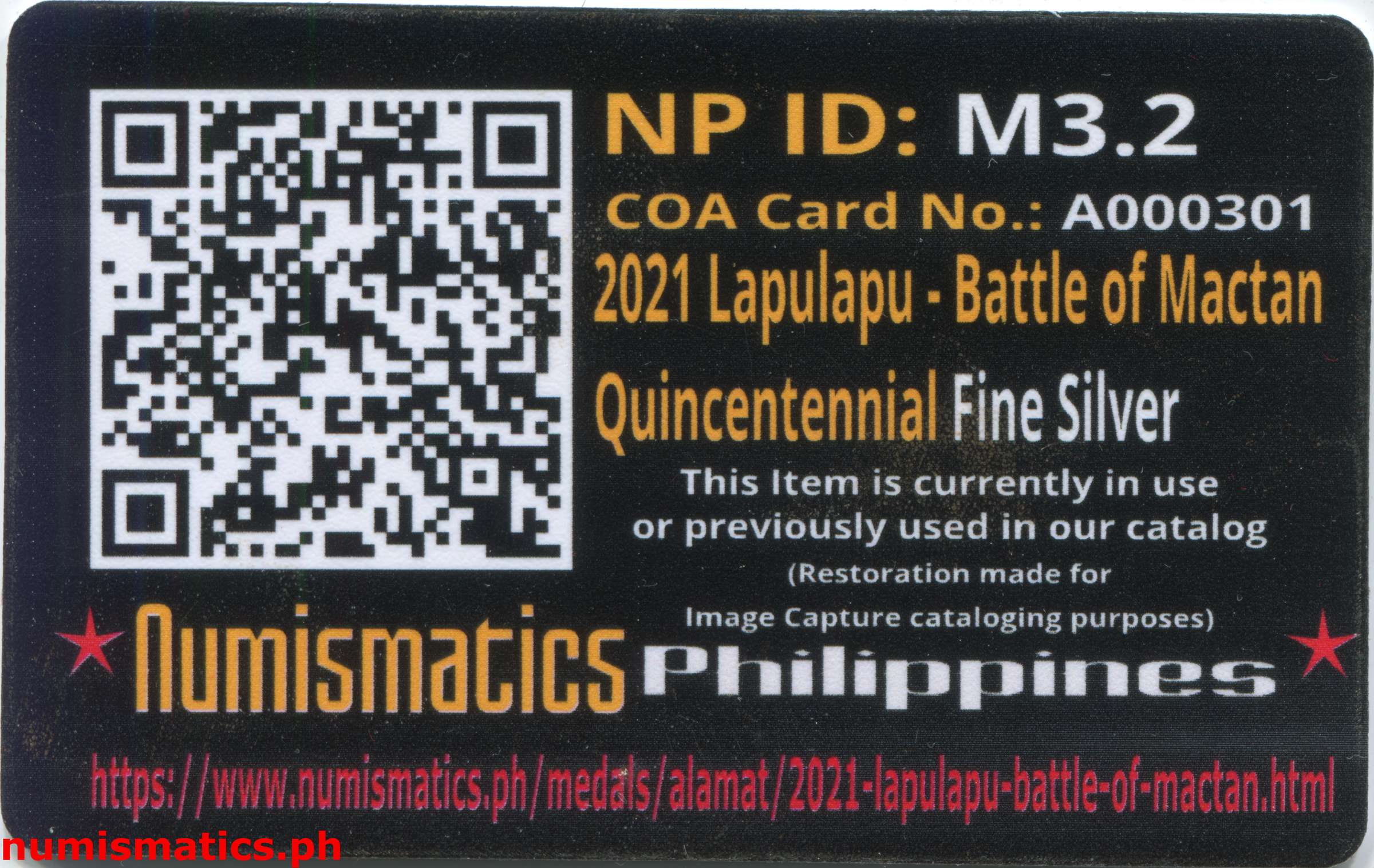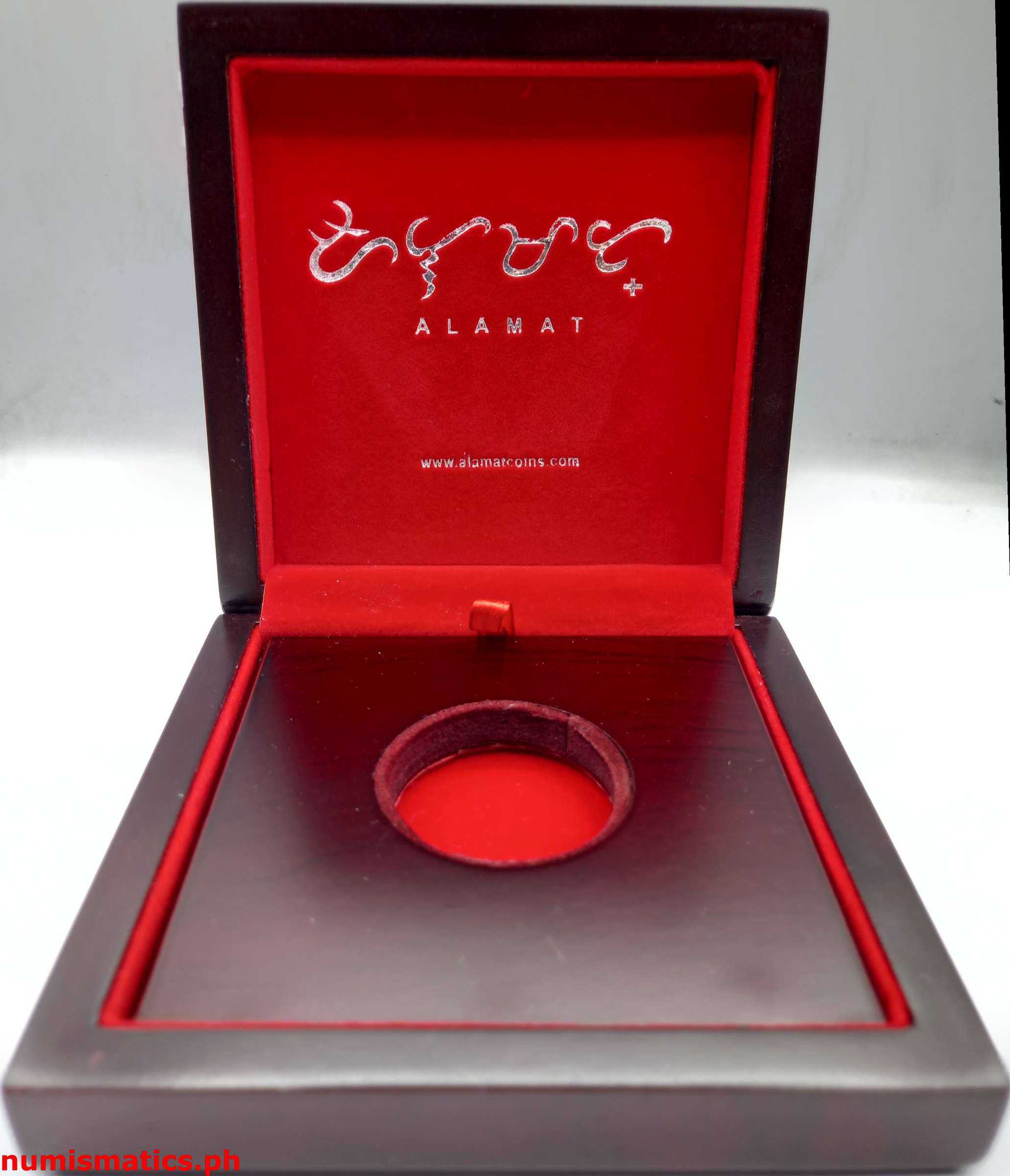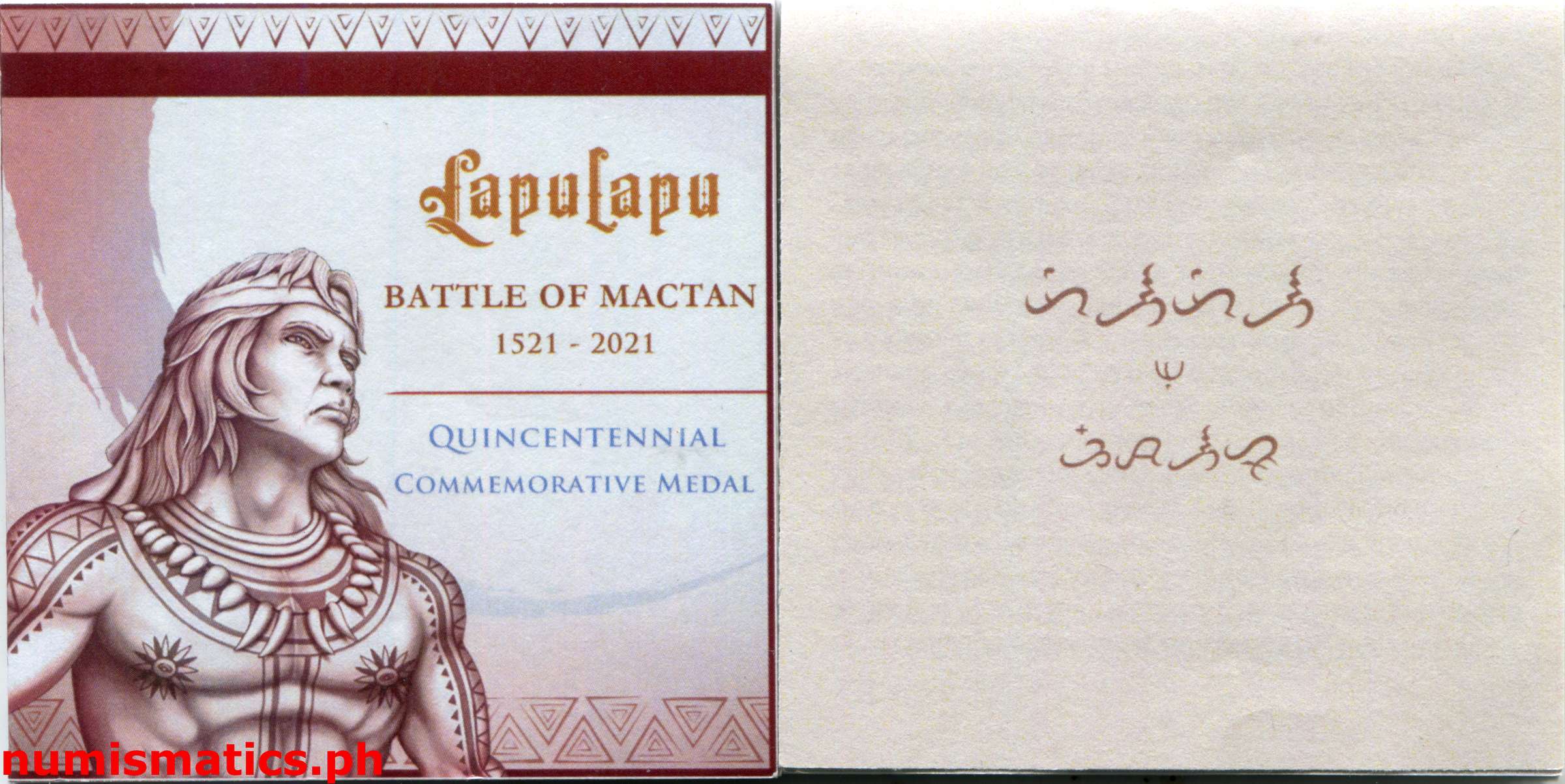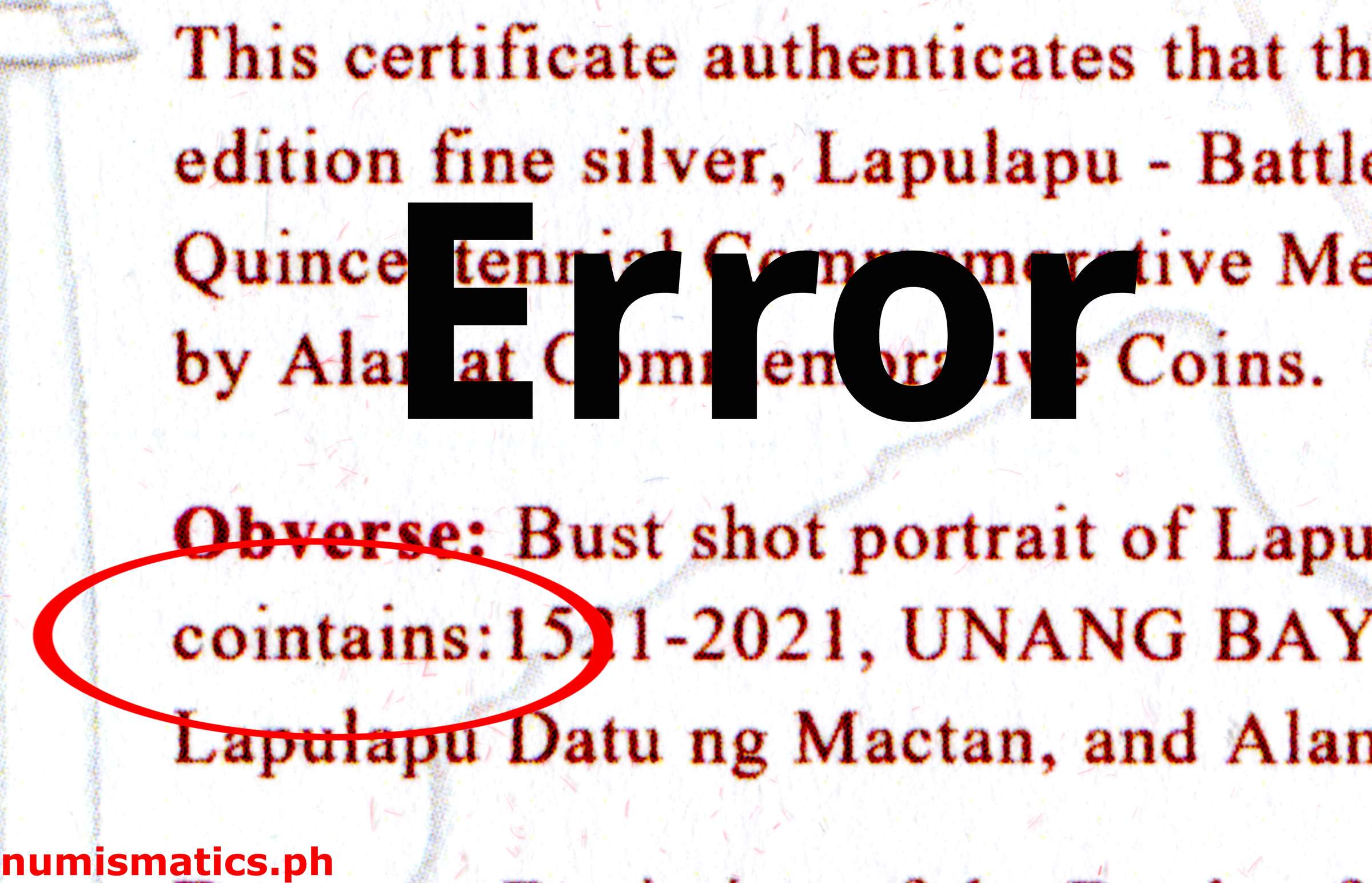Obverse M3.1
The obverse of the medal shows the bust shot portrait of Lapulapu. 3 Stars "Republika ng Pilipinas" "" "Lapulapu" "First Filipino Hero"
Obverse M3.2
Bust shot portrait of Lapulapu. The text contains: -, Unang Bayani ng Pilipinas, Lapulapu Datu ng Mactan, and Alamat mint Mark.
Reverse M3.1
The reverse depicts the Battle of Mactan that happened on , the historical battle between Datu Lapulapu and Ferdinand Magellan. Logo of Alamat Commemorative Coins. 2 Stars "Battle of Mactan" "Alamat Commemorative Coins"
Reverse M3.2
Depiction of Battle of Mactan, showing Lapulapu in the middle with his army, charging against Ferdinand Magellan and his troops. Alamat logo at the top. The text contains: Quincentennial, Battle of Mactan, -. 500 years of victory. Baybayin words “Alamat (left), Pilipinas (right), and “Ag 999” below.
Certificate of Authenticity M3.1
Lapulapu - Battle of Mactan 500th Anniversary Proof Medal
Philippine Historical Figures Series
Issue No.1
Limited Edition: One of 300
Serial Number
*LL100*
Alamat Commemorative Coins
HTTPS://ALAMATCOINS.COM
This Certificate of Authenticity attests to the fact that this limited edition Lapulapu - Battle of Mactan 500th Anniv. Proof Medal is authentic and issued by Alamat Commemorative Coins.
Certificate of Authenticity M3.2
Lapulapu
Battle of Mactan
-
Quincentennial Commemorative Medal
Baybayin Characters (Alamat)
Limited Edition: One of 300
Serial Number
*LL047*
Alamat Commemorative Coins
HTTPS://ALAMATCOINS.COM
This certificate authenticates that this limited edition fine silver, Lapulapu – Battle of Mactan Quincentennial Commemorative Medal was issued by Alamat Commemorative Coins..
Note
This is to commemorate the 500th anniversary victory of Lapulapu.
Remarks M3.1
Optional box priced at ₱400 released later on . The diameter in Certificate of Authenticity states that the diameter is 32 mm instead of 33 mm actual diameter. The COA states that the quality is Proof, it is noted by our in-house cataloger that it is actually Proof-like quality with Frosted Design finish in a Mirror-Finished Brilliant Uncirculated background.
Remarks M3.2
The thickness in Certificate of Authenticity states that the thickness is 2.5 mm instead of 2.74 mm actual thickness. The COA states that the quality is Proof, it is noted by our in-house cataloger that it is actually Proof-like quality with Frosted Design finish in a Mirror-Finished Brilliant Uncirculated background.
Literature M3.2
Datu Lapulapu of Mactan is considered by many Filipinos as the first hero of the Philippines because of his resistance to imperial Spanish colonization. Very little information known about his early life, most part of them are folklores. He was called by many names. Lapu-Lapu, Cilapulapu, Cali Pulaco, Lapulapu Dimantang and Kaliph Pulaka. According to some folk accounts, he was born sometime between 1450 to 1490 in the Kingdom of Borneo. When he was 6 years old, he can do horseback riding, and learned to read at the age of 7. At the age of 18 he mastered swimming and wrestling and became champion of these sports. At the age of 20 he fought Bornean soldiers and pirates and achieved victories in his battles. A few years later Lapulapu and his men went to the island of Cebu where he met Rajah Humabon (King of Cebu). Rajah Humabon gave him Mandawili (modern day Mandaue) and Opong (modern day Lapu-Lapu City). In exchange, Lapulapu should maintain the prosperity of the island. He became the chieftain of the region and was called Datu Lapulapu of Mactan Island. Under Lapulapu’s leadership, the economy of the island flourished largely because of the goods he brought from the land and sea in northern Cebu that increased trading. With his power and influence growing, it did not take long for his relationship with Humabon to sour.
On , a Portuguese explorer under the Spanish Empire, Ferdinand Magellan arrived in the Philippines. Upon his arrival he befriended Rajah Humabon and the locals. Magellan introduced Christianity to them, and 2,200 locals were baptized as Roman Catholics including Rajah Humabon. Magellan wants to spread Christianity to neighboring islands. He tasked Humabon to convince the two datus of Mactan who ruled the island, Datu Zula and Datu Lapulapu to be baptized and pledge their allegiance to the King of Spain. But it was only Datu Zula who obeyed the request of Rajah Humabon. Lapulapu refused to convert to Christianity. He believed it was the way of the Spaniards to have supremacy over him and his people. Because of the existing rivalry between Rajah Humabon and Lapulapu, and Lapulapu's refusal of Magellan's order, Humabon asked Magellan to fight Lapualapu that led to now famous "Battle of Mactan”,
At early dawn of Ferdinand Magellan and his 60 men, armed with matchlock muskets, rapiers, shields, and armors sailed his remaining 3 galleon ships towards Mactan Island. He asked Humabon and Zula not to interfere. When they arrived at Mactan the ships cannot land on the shores because of the low tide, they sailed using smaller boats. On the other side, Lapulapu and his 1,500 warriors were waiting for them. Equipped with "kampilan" (broad long sword, similar to falchion), "sibat" (iron-tipped bamboo spears) and bows. The battle started with the galleons firing cannons. Since it was low tide, the cannons couldn't able to reach the locals. They started shooting their muskets until they run out of bullets. They crossed the waist-deep water. Before the Spaniards set foot on the land Lapulapu confronted them with arrows and throwing-spears, Magellan ordered his men to burn the houses. It only enraged the native warriors. They charged and overwhelmed Magellan's forces with their numbers. Slowly, the Spaniards retreated toward their galleons. Magellan was hit in the knee with a poison arrow. The natives saw it and attacked him. Magellan was hacked by a kampilan in his leg and was stabbed by a spear in his arm. His men who tried to help him wete killed. The natives ganged-up on Magallen and killed him.
Lapulapu's warriors recovered Magellan's body and took it as a war trophy. Humabon tried to exchange Magellan's body for large amount of merchandise but Lapulapu refused. Some of Magellan's soldiers who survived the battle and returned to Cebu were poisoned at a feast given by Humabon. Magellan was succeeded by Juan Sebastian Elcano as commander of the expedition, and successfully completed the first circumnavigation of the world. Magellan's last surviving ship Victoria reached Spain on .
Very little was known about Lapulapu after the battle of Mactan. According to some folk accounts, he returned to Borneo and died from old age. But according to native legend he never died but turned into stone and became a guardian of the sea. Lapulapu's legend continues to grow over years. But one thing is for sure, he was the first hero of the archipelago who successfully defended his land over foreign power.
Error M3.2
Cointains instead of Contains in COA

